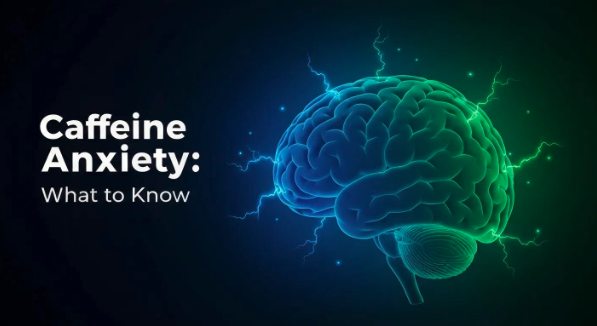How Art Therapy Helps with Emotional Expression
Discover the impact of using art therapy for emotional expression and enhance your mental well-being today.

Art Therapy for Emotional Expression
The Power of Art Therapy
Art therapy provides a safe and non-judgmental space for individuals to express complex and sometimes overwhelming emotions. The art-making process allows for a direct and unfiltered expression of one's inner world, which can be particularly beneficial for those who struggle to articulate their feelings verbally.
One significant benefit of art therapy is its empowering nature. Participants exercise control and make choices throughout the artistic process, which leads to a sense of ownership, accomplishment, self-esteem, and self-confidence. This experience promotes resilience by enhancing problem-solving skills, adaptability, and resourcefulness [1].
The therapeutic art-making journey enables individuals to communicate their innermost thoughts and feelings, explore experiences, and embark on a path of self-exploration and growth. This transformative approach can efficiently contribute to emotional well-being and self-understanding.

Benefits for Trauma Survivors
For trauma survivors, art therapy can be particularly beneficial. It helps individuals open up and share their feelings, perspectives, and experiences, serving as both a therapeutic method and an auxiliary treatment for diagnosing conditions. The expressive capacity of art therapy often provides complementary information that differs from conventional assessments [2].
This holistic approach, known as expressive arts therapy, mobilizes creative expression to facilitate healing for both mind and body. By incorporating various forms of creative expression, it enables clients to articulate their inner worlds more vividly [3].
Art therapy allows trauma survivors to visualize their experiences and emotions in a way that can lead to profound emotional release. It can enhance cognitive and emotional tools required for coping with trauma, thereby contributing to overall personal growth and healing. For further insights on emotional regulation, consider exploring emotional regulation techniques.
Personal Growth Through Art
Art therapy offers powerful opportunities for personal development, particularly in the realms of self-discovery and understanding one's beliefs and values. Engaging in artistic creation aids individuals in exploring their inner worlds and fosters significant emotional growth.
Self-Discovery and Creativity
Engaging in art-making within a therapeutic context fosters self-discovery and personal growth. Individuals can tap into their imagination and explore new possibilities, gaining insights into their thoughts, beliefs, and values [1]. This creative process allows participants to express emotions that may be hard to verbalize, ultimately enhancing self-awareness.
Art can take many forms, including drawing, painting, and even dance. The process itself is often more critical than the final product, as art provides a medium for emotional release and exploration. Art therapy encourages a playful approach to creativity, which reduces stress while allowing individuals to engage with their feelings and aspirations.
Art FormDescriptionDrawingUsing pencils or charcoal to depict thoughts or feelingsPaintingExpressing emotions through colors and brush techniquesSculptureCreating three-dimensional objects to represent feelingsDanceUsing movement to convey emotions and experiences
Insights into Beliefs and Values
Art therapy also promotes introspection by facilitating insights into personal beliefs and values. Through creative expression, individuals can examine their perspectives and attitudes toward various life experiences. This process cultivates a deeper understanding of oneself and can lead to positive changes in behavior or thought patterns.
Participants often find that their artwork reflects underlying themes in their lives, revealing coping mechanisms, aspirations, and fears. As they reflect on these creations, clients may uncover hidden aspects of their identity that they had not previously acknowledged. By understanding these beliefs and values, they can make more informed choices about their lives and relationships.
The integration of art therapy in various community settings has expanded its benefits, allowing individuals to manage intense emotions, develop self-worth, and encourage introspection through creativity. By using art as a tool for emotional expression, individuals can enhance their emotional regulation skills, which are crucial for navigating life's challenges.
For more information on strategies to manage emotions, visit our articles on emotional regulation techniques and supporting a loved one with mood challenges.
Empowerment and Resilience
Art therapy serves as a powerful tool for fostering empowerment and resilience in individuals facing emotional challenges. By engaging in the artistic process, participants can experience significant benefits that contribute to their emotional well-being.
Exercising Control Through Art
Art therapy empowers individuals by allowing them to exercise control and make choices throughout the artistic process. This autonomy leads to a sense of ownership, accomplishment, self-esteem, and self-confidence [1]. When individuals are given the freedom to express themselves creatively, they can take charge of their emotions and experiences, aiding in personal growth. Here’s a breakdown of how art therapy helps in exercising control:
Benefits of Exercising ControlDescriptionIncreased Self-EsteemMaking creative decisions boosts confidence.Sense of AccomplishmentCompleting art projects fosters a feeling of achievement.Ownership of FeelingsParticipants can express personal experiences and emotions.
This control is not only therapeutic but also cultivates resilience, helping individuals adapt to stressors and challenges in their lives.
Fostering Problem-Solving Skills
Engagement in art therapy also promotes problem-solving skills, adaptability, and resourcefulness. As individuals navigate the artistic process, they often encounter challenges that require creative solutions. This practice translates into real-life scenarios, where individuals learn to approach problems with a positive mindset and innovative thinking. The benefits of developing problem-solving skills through art include:
Problem-Solving BenefitsDescriptionEnhanced AdaptabilityAdjusting techniques in art can reflect adaptability in life.ResourcefulnessDiscovering new ways to express feelings encourages creativity.Improved Decision-MakingArtistic choices sharpen critical thinking skills.
Overall, art therapy provides a transformative path toward emotional well-being and self-understanding, helping individuals build resilience and cope with mood challenges effectively. For those looking to explore techniques in emotional regulation, consider visiting our article on emotional regulation techniques.
Communicating Through Art
Art therapy plays a vital role in emotional expression, allowing individuals to articulate their thoughts and feelings through a creative medium. This non-verbal approach is especially beneficial for those who find it challenging to communicate verbally, as it offers a safe space for exploring complex emotions and experiences.
Expressing Thoughts and Emotions
Through the art-making process, individuals can express their innermost thoughts and feelings in a direct and unfiltered manner. This creative outlet can serve as a powerful means of communication, enabling individuals to articulate emotions that may be difficult to express in words. According to EmpathyHQ, art therapy provides a non-judgmental environment where complex emotions can be explored and understood.
Engaging in this form of therapy fosters a sense of relief, as individuals can visualize and externalize their emotions. This is particularly beneficial for those dealing with mood disorders, as it encourages emotional regulation and reflective practice. Creating art allows for a physical representation of feelings, making it easier to address and process them.
Embarking on Self-Exploration
Art therapy also encourages self-discovery and personal growth. Participants gain insights into their beliefs, values, and inner thoughts through creative exploration [1]. This journey of self-exploration can lead to increased self-awareness, which is crucial for individuals managing mood disorders.
By engaging with various artistic methods such as painting, drawing, or sculpting, individuals are able to explore new possibilities and tap into their imagination. This creative freedom can be transformative, promoting emotional well-being and self-understanding. As indicated by Michigan State University Extension, art therapy, when combined with traditional talk therapy, can significantly help individuals manage intense emotions and increase self-worth.
In summary, using art therapy for emotional expression not only helps communicate complex feelings but also facilitates an enriching process of self-discovery and personal growth. This dual benefit makes art therapy a valuable tool for individuals looking to navigate their emotional landscapes more effectively. For additional techniques on emotional regulation, consider exploring emotional regulation techniques.
Art Therapy for Mental Illness
Art therapy is a valuable approach for addressing mental health issues, allowing individuals to express themselves freely while enhancing their overall well-being. This form of therapy is grounded in the belief that creative expression through art can lead to recovery and improvement in mental health.
Enhancing Mental Health
Art therapy has shown significant effectiveness in treating various mental health disorders. Studies indicate that this therapeutic method can improve symptoms of depression and anxiety in patients dealing with major depressive disorder National Center for Biotechnology Information. Participants often engage in diverse art activities such as weaving, collage, clay modeling, drawing, and painting, which contribute to emotional and psychological improvements.
For a clearer understanding of the impact, consider the following table showcasing common mental health disorders treated by art therapy and their related benefits:
Mental Health DisorderBenefits of Art TherapyDepressionReducing symptoms, enhancing emotional expressionAnxietyAlleviating stress, improving coping strategiesCognitive ImpairmentSupporting cognitive function and memorySchizophreniaEnhancing emotional awareness, reducing symptomsAutismEncouraging communication and social skills
Improving Interpersonal Relationships
Art therapy also plays a crucial role in enhancing interpersonal relationships. It provides a safe space for individuals to open up about their feelings, thoughts, and experiences, fostering connections with others. By creating art, individuals can communicate feelings that may be difficult to express verbally. This therapeutic method serves both as a means of emotional release and a valuable tool for social interaction.
The benefits of art therapy extend beyond individual healing. It promotes group interactions where participants share their creations and discuss their emotions, thereby building trust and empathy among them. This communal aspect can significantly improve social skills and relational dynamics, making it an effective complementary treatment alongside more traditional methods.
For further insights into related techniques for emotional improvement, check our articles on emotional regulation techniques and impact of diet on emotional well-being. Art therapy thus stands as a pivotal avenue for not only improving mental health but also nurturing meaningful connections among individuals.
Effectiveness in Treatment
Art therapy has emerged as a valuable intervention for individuals experiencing mood disorders, particularly for those dealing with depression and anxiety. This therapeutic approach utilizes various creative methods to promote emotional expression and facilitate healing.
Improving Symptoms in Depression
Numerous studies indicate that art therapy can significantly alleviate symptoms of depression. Specifically, various techniques such as weaving, collage, clay modeling, drawing, and painting have been shown to be effective in enhancing emotional well-being in patients with stable and pharmacologically treated major depressive disorder. Art therapy encourages self-expression and emotional awareness, which are crucial in managing depressive symptoms.
The following table illustrates some common art therapy techniques and their reported impacts on depression:
Art Therapy TechniqueImpact on DepressionWeavingReduces isolation and enhances focusCollageEncourages self-reflection and emotional releaseClay ModelingProvides a sensory experience, reducing anxietyDrawingPromotes emotional expression and communicationPaintingFosters mood enhancement through visual creativity
Impact on Anxiety Disorders
Art therapy has also proven beneficial for individuals dealing with anxiety disorders. Research shows that engaging in creative activities can lead to a decrease in both positive and negative symptoms of anxiety. For example, painting therapy has significantly reduced anxiety symptoms among various groups, including elderly patients, students, and individuals in correctional facilities.
The creative process allows individuals to channel their anxious thoughts into tangible forms, effectively releasing pent-up emotions and fostering a sense of control. This therapeutic approach is beneficial for enhancing emotional awareness and promoting coping mechanisms in the face of anxiety.
Art therapy's effectiveness is supported by its ability to create a safe space for expression, enabling individuals to confront their feelings creatively. For more information on emotional regulation techniques, visit our article on emotional regulation techniques.
Overall, using art therapy for emotional expression can be a powerful tool in improving emotional health and managing mood disorders, paving the way for personal growth and resilience.
References
[2]:
[3]:
[4]:
[5]:
More Resources
A team ready to start your journey.
Get in touch — today.
We are a safe space – a haven for exceptional individuals to receive discreet, personalized, in-person treatment and care.
.avif)



.webp)






